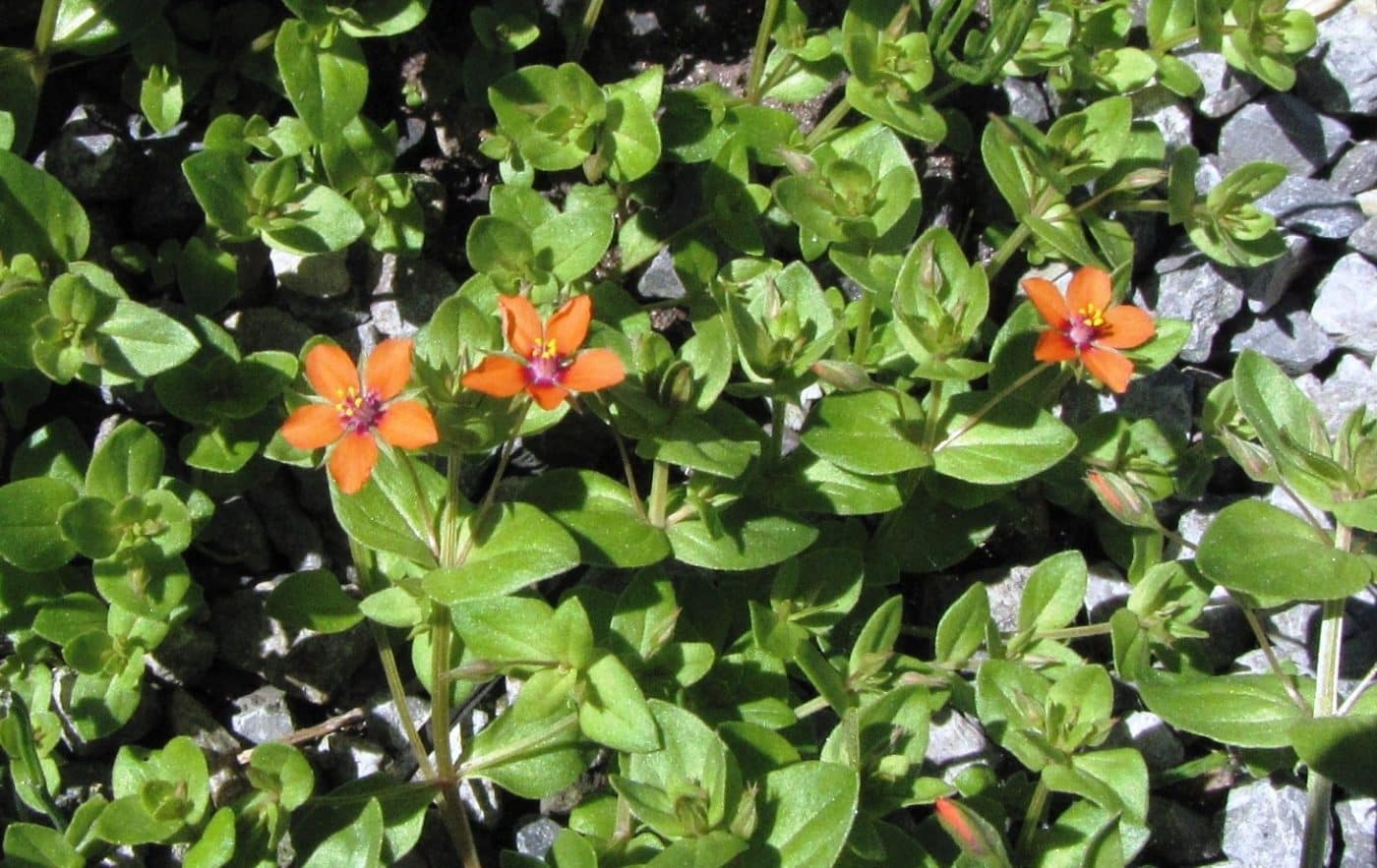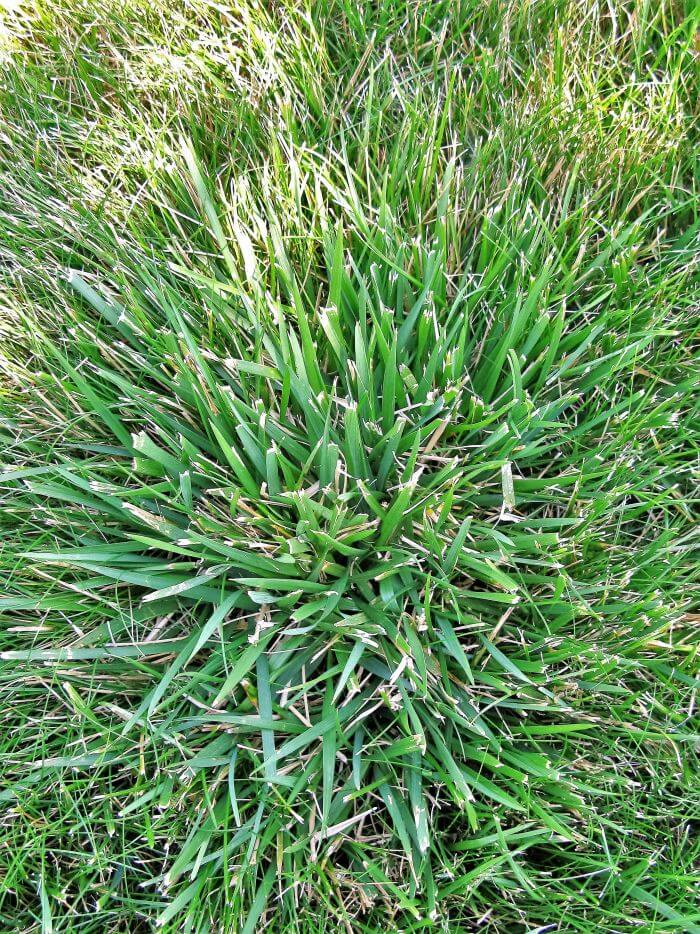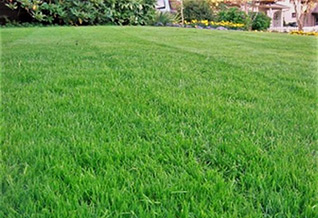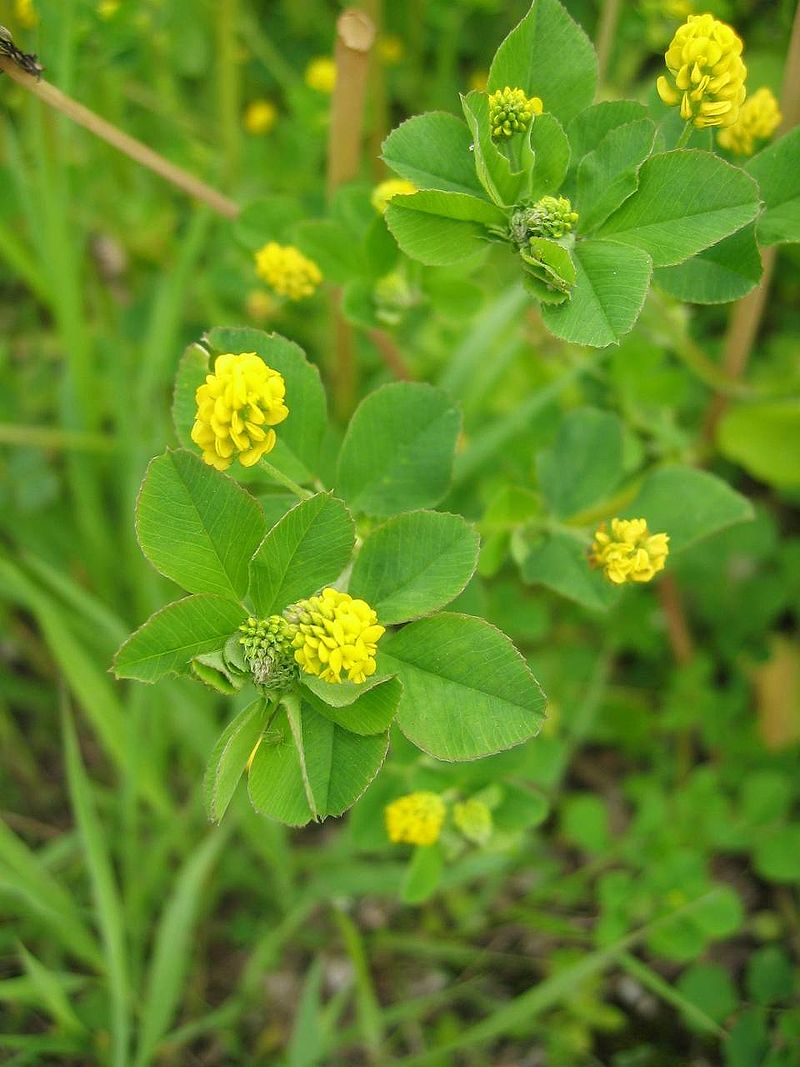Interesting Facts
- This weed came to North America with European settlers, as a food source but is also used to treat a variety of ailments.
- The whole plant of Common Chickweed above ground is edible. But if you are eating it fresh you might only want to use the leaves. When cooking with it you can use the stems, they can be a bit fibrous.
- Chickweed can be used to make ointments for itchy dry skin, and psoriasis.
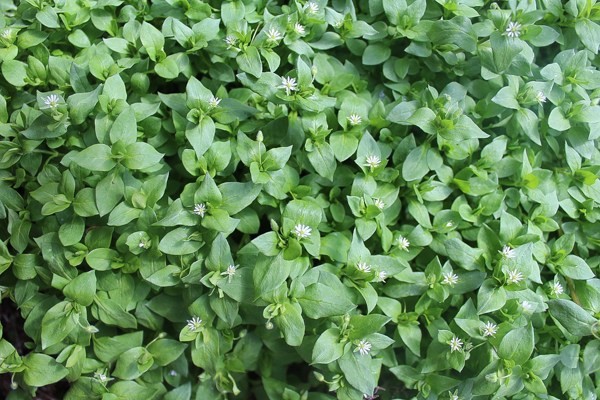
Ideal Conditions for Weed Growth
Common Chickweed is a low growing weed, that will form a mat if grown to maturity. It has pointed-egg shaped leaves that grow opposite each other on a long stem, with tiny white flowers. The stem will also have a single line of hairs growing along its length. This is an annual weed that will germinate from seed during the fall. It can also be one of the first weeds to come up in the spring, even when there is snow. It often will die off during the heat of the summer but will come back in the fall. Chickweed likes moist areas that are partial shaded. This is most commonly found in flower beds, but can be found in lawns as well.How to Control Chickweed
Since chickweed is an annual it can be controlled pre-emergently by using our Synergy. This product is used in the lawn. We put this down in both spring and fall to get the most thorough control of weed seeds. We also have a pre-emergent weed control for rock or mulch areas – ideally this is put down over the winter. If it’s too late in the season for pre-emergent control we can get control of this weed by doing back to back applications of our 100% organic post-emergent weed control and fertilizer called One Earth. This application should be done about 1 week apart. You will get the best results when treating early in the year (late April-May), when it is young and actively growing. For rock or mulch areas we would suggest to use Avenger, this will need to be used on young weeds or weeds 4 inches or shorter.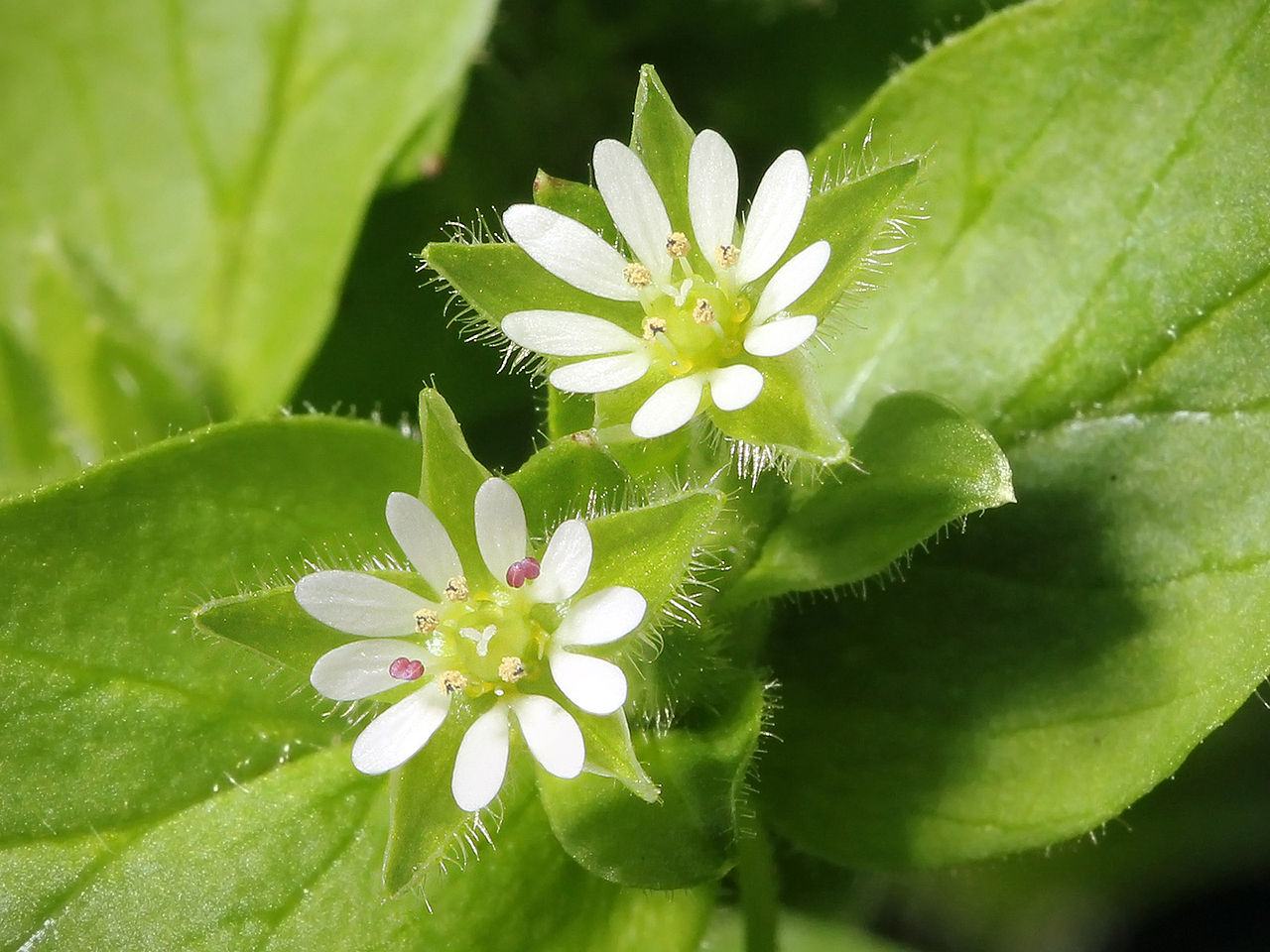
Is this Chickweed?
Anagallis arvensis or Scarlet Pimpernel is a poisonous look-alike to chickweed. If you are foraging, you want to make sure you are actually clipping chickweed and not Scarlet Pimpernel. It will be easy to differentiate when it flowers, Common Chickweed will have small white flowers but Scarlet Pimpernel will have orange/red flowers. You can also test by seeing if the plant has a milky sap. Common Chickweed will not have this milky sap when broken.